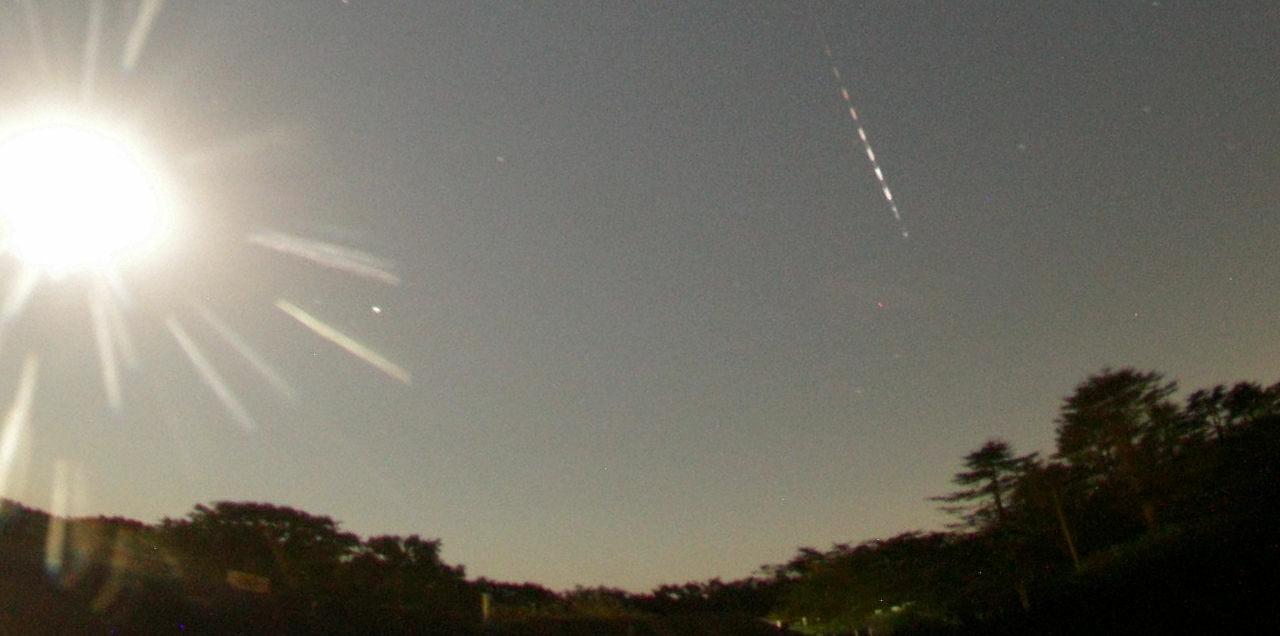Table 1. Overview of the visual observations made in Ermelo (5.4 east, 52.2 north in the Netherlands) by the author.

Introduction
After the observations in Northern France at the end of May and early June, the visual observations temporarily stopped. The author had to undergo a major surgery on July 6th. Recovery at home would take 2 months. In this case, a wisdom from the famous Dutch footballer Johan Cruijff applies: elk nadeel heeft zijn voordeel (translated: every disadvantage has its advantage)! In my case all the time to observe the Perseids… The weather during that period was very sunny and this resulted in quite a few clear nights, especially in August. Unfortunately, the full moon was a bummer around the Perseid maximum. Nevertheless, the author was able to observe a record number of hours in August. The author has never observed so many hours in August from the Netherlands since starting doing meteor observations since 1979! Most observations were done on the Groevenbeekse Heide (a heath south of Ermelo).
Observations
After the full moon on July 14, observation activities could resume. Soon a clear night presented itself:
19/20 July 2022
A short session because of the rapidly rising waning moon. This 1.5 hour session yielded the first Perseids and Capricornids. A blue-green 0 Capricornid was the most beautiful meteor during this session. After a period with many nights that were cloudy or partly clear (cirrus), it was possible to observe again in the night:
29/30 July 2022
The start of this session was great: crystal clear sky with high transparency. Scorpius visible in the southwest, Saturn shone nice in the southeast, and Jupiter appeared above the horizon a little later. And a little later, the Pleiades with Mars nearby are visible again. A single tuft of cirrus is visible here and there, but they disappear quickly. The southern wind blew very weakly and initially kept the fog away. The temperature also dropped quickly at groundlevel to a 6 degrees Celsius. Later in the night it became increasingly foggy causing varying limiting magnitudes between 6.0 and 6.4. There was a funny incident when I observed an SDA and recorded the data on my dictaphone: a bird flies right past my face: I got slapped by the wing in my face! It happened so fast I have no idea what kind of bird it was! Observing exactly 4 hours resulted in 56 meteors, of which 9 Perseids, 8 Southern Delta Aquariids and 4 Capricornids. The most beautiful meteors were a -1 Southern Delta Aquariid and a 0 Perseid and a 0 sporadic meteor (SPO). After a few more or less cloudy nights, the night 2/3 august was clear again:
2/3 August 2022
The moon has now become an evening apparition, but that is no problem in August, as it sets at 21:00 UT. A quiet night, only the sound of an owl in the woods can be heard. The observations started at 21:40 UT: it is beautifully clear with a Milky Way visible from Cassiopeia to above Sagitarius. SQM 20.50, which is a good value for Ermelo standards. Limiting magnitude rose to over 6.4. Thanks to the dry air there was no problem with fog, unfortunately some thin cirrus floated in after 01:10 UT. The temperature dropped to 13 degrees Celsius, which is quite high at the beginning of August.
4.1 hours of observation yielded 82 meteors, of which 19 Perseids, 10 Southern Delta Aquariids, 5 Capricornids and 5 Antihelions. The SDAs were remarkably active between 23 and 01 UT with 4 meteors every hour. They were also striking in brightness, for example, a beautiful blue-white SDA of magnitude -2 was visible at 23:56 UT. And a minute later another +1 SDA.
The Perseids were also active with hourly counts increasing from 2 to 7. At 23:36 UT a nice -1 Perseid was seen and at 00:25 UT another one of -2. All in all a fun night!
By now it is also clear that we are heading for a heatwave in the period around the Perseid maximum. Fortunately, the nights until August 14 are still relatively cool and the air is also very dry.
5/6 August 2022
This was also a beautiful clear night. It was striking that the Weather&Radar app predicted some clouds just northeast of Ermelo. Indeed it did, and for most of the night cloud cover was visible in low northeasterly direction moving in the southeasterly direction. Also, the clouds eventually moved a little higher in the sky during the period 00:43 and 01:44 UT.
The SQM values were slightly lower than the previous clear night, but the limiting magnitude topped again at 6.4. Thanks to the combination of dry air and no wind, it cools down very quickly. From 5 degrees Celsius at the start to 0 degrees Celsius at the end of the session! In the end, however, low sharply defined ground fog is formed, a beautiful sight and, thanks to the slightly higher location of the author, it remained below the field of view. Observations were done between 21:40 to 02:05 UT. The moon soon disappears at 22:15 UT. In total, 79 meteors are counted during 4.35 hours effectively.
The SDA are now clearly less active with 7 meteors and hourly counts of up to 2. The Perseids are comparable to the previous night: up to 9 Perseids hour with a total of 28 Perseids, 5 Antihelions, 3 Capricornids and 1 kappa Cygnid complete the list. Two Perseids were the most beautiful meteors: at 22:38 UT a nice -3 in Perseus with 3 seconds of persistent train. And at 00:32 UT a 0 Perseid with a persistent train of 2 seconds. The following nights remained clear and this action turned into a real observation marathon.
6/7 August 2022
Unfortunately, the undersigned overslept. Just after 1 UT I woke up. So I quickly decided to observe on the meteor roof at home. For example, an hour could be observed between 01:21 and 02:22 UT. That was definitely worth it with 21 meteors of which 12 PERSEIDS, 1 SDA and 2 ANT. Two Perseids of -2 were the highlight at 01:28 and 01:56 UT.
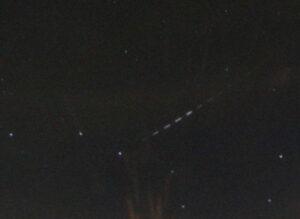
Figure 1. Perseid fireball magnitude -6 in the Big Dipper on August 6, 2022 at 22:56 UT.
EN908, Canon 6D with Sigma 8mm F3.5 fish-eye lens. Shutter: 50/50, 16 breaks per second.
7/8 August 2022
This night went differently than expected. For starters, the sky background was quite light and there was fog. The limiting magnitude decreased from 6.3 to 6.0. The western parts of the sky were completely filled with cirrus moving from northwest to south, but seemed to miss Ermelo at first. I signed on at 22:29 UT, the moon set at 23:10 UT. However, after 00:17 the fog and cirrus increased rapidly and I had to stop this session. For 1.72 hours 28 meteors were counted of which 12 Perseids, 1 Southern Delta Aquariid, 1 Capricornid and 1 kappa Cygnid. Best meteors were: two Perseids of magnitude 0 and -1, but a bright green slow-moving -2 Capricornid was the absolute highlight of this session. A pair of meteors appeared in quick succession at 23:03 UT (-1, fast in Cassiopeia) and at 23:14 UT (+1 in Pegasus). I classified the first as a Perseid but immediately there was doubt, the path was quite long. The second meteor appeared in the square of Pegasus which seemed to originate from the star Algol (beta Persei). So: were these beta Perseids? Unfortunately, nothing more appeared and even afterwards looking in CAMS data of that night there was little to see in that area.
8/9 August 2022
More and more moonlight now, moonset around 0 UT, but luckily it disappears behind the trees at 23 UT. That did yield some gains in terms of limiting magnitude. The limiting magnitude rose from 6.0 to 6.4 before dawn ended the observations. At the beginning of the session I thought back to the possible beta Perseids from the previous night. But hey.. something is wrong with the constellation Perseus: Algol is noticeably weaker than normal. That’s right, the star was at a minimum around 22 UT. Thanks to the transparency, quite a few meteors were still counted: 62 in total in 3.37 hours of effective observation time. 38 Perseids, 2 Southern Delta Aquariids, 1 Capricornid, 1 Kappa Cygnid and 2 Antihelions. A -2 Perseid and -1 sporadic meteor were the highlights of this session.
9/10 August 2022
Wow, it’s clear again… Session started at 23:09 UT. In the meantime, the moon is already a very disturbing light source and sets around 1:05 UT. Fortunately, she disappeared behind the trees around 00:05 UT. The sky was very transparent. The limiting magnitude was a bit disappointing despite the transparency. Limiting magnitude increased from 5.8 to 6.3.
In 3.28 effective hours, 66 meteors are counted. The Perseids are doing well with 34 meteors with the highest hourly count of 15 meteors. Furthermore, 2 Southern Delta Aquariids, 1 Capricornid, 1 Kappa Cygnid and 1 Antihelion were counted. A Perseid of -2 and a 0 Capricornid were the most beautiful appearances.
10/11 August 2022
The first session with moonlight all night long. Limiting magnitude increased from 5.4 to 5.8. The author has no dislike of observing meteors with moonlight, it gives the observation something special. During 2.60 hours 49 meteors were still counted, most of them Perseids (37). The maximum 30 minute count was 11. Three beautiful meteors were seen, the first a yellow-green -2 Capricornid passing just below Jupiter. A quick sporadic meteor of 0 left a 2 second glowing train and the very last meteor of this session was a sporadic beauty of -3, moving from Aries to the Pleiades.
11/12 August 2022
A bit strange night this one. Observations were again done on the Groevenbeekse Heide. But somehow there was little contrast in the sky. Perhaps caused by damp or dust, because the evening before I saw faint yellowish bands in the sky. The moon was shielded by a bag. With the moon above the horizon all night, a short session was held. The session started at 23:36 and ended at 02:06 UT. During these 2.50 hours effective I counted 43 meteors. Maximum 30-minute count was 10. A Perseid of -2 low in the southeast was the most beautiful meteor.
12/13 August 2022
Due to the low contrast the night before, I decided to observe this and the following night on the meteor roof at home. There, the moon stays nicely behind the eaves. Indeed, the contrast and transparency were a lot better than the previous night. Observations started at 23:36 UT. The limiting magnitude is 5.8 at the start, then decreases to 5.4 and rises again to 5.7 at the end of the night. Observations were done between 21:45 and 02:30 UT.
Immediately at the start two bright Perseids: a +1 and a -2 within seconds. Activity was decent considering the almost full moon. 30-minute counts increased from 5 to 15 over the course of the night. A total of 107 meteors were seen. Two fireballs: at 00:37 UT a short sporadic meteor with flare -3 a -4 low west and at 00:47 UT a nice -5 Perseid in the Big Dipper, with a persistent train for 8 seconds. The bright fireball captured with my all sky camera EN908 at 01:19 UT is not seen, but it is captured by the all sky. From the author’s point of view, the fireball appeared behind the neighbor’s chimney. In addition to the many Perseids of -1 and -2, a beautiful SDA was also seen. This yellow meteor reached a maximum magnitude of 0 and showed fragmentation at the end in the form of a glitter wake 1 to 2 degrees long.
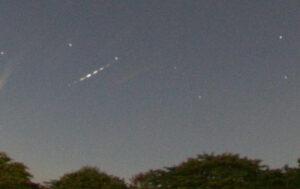
Figure 2. Perseid of magnitude -5 in the Big Dipper on August 13, 2022 00:47 UT.
Camera: EN908, Canon 6D with Sigma 8mm F 3.5 fish-eye lens. Shutter: 50/50, 16 breaks per second.
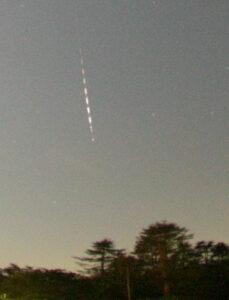
Figure 3. The brightest Perseid fireball of August 12/13, 2022 at 01:19 UT low in the southwest.
Camera: EN908, Canon 6D with Sigma 8mm F 3.5 fish-eye lens. Shutter: 50/50, 16 breaks per second.
13/14 august 2022
In the evening some clouds appeared over Ermelo. This, the fatigue of the many nights without too much sleep and a party that evening made the author decide not to observe this night. Turns out the clouds disappeared soon. When I see that the sky is cloudless at 00:45 UT I quickly go up the meteor roof. Good transparency and contrast! A quick session between 01:00 and 02:51 UT resulted in 38 meteors. A beautiful -3 Perseid was the highlight.
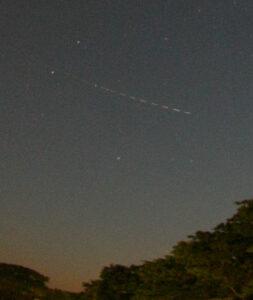
Figure 4. Perseids fireball magnitude -4 in Pegasus on August 13, 8:32 PM UT.
EN908, Canon 6D with Sigma 8mm F3.5 fish-eye lens. Shutter: 50/50, 16 breaks Perseid’s second.
August 18/19 2022
A short session at the heath. The moon rose quickly, this short session yielded 14 more meteors of which 2 Perseids and 2 Antihelions.
20/21 August 2022
A 3.00 hour session with moonlight during the last hour. A total of 35 meteors are counted amongst them 4 Perseids, 1 Kappa Cygnid and 6 Antihelion. The most beautiful is a +1 sporadic meteor.
24/25 August 2022
A long session, but hampered with passing clouds. In terms of conditions a moderate night, a light sky background and twice observations had to be stopped for a long time due to slowly passing cloud fields. A beautiful blue-white magnitude 0 sporadic meteor moved parallel to the northeast horizon through the constellation of Gemini. In total, 2.52 hours of observations yielded 34 meteors, of which 2 Perseids, 5 Antihelions and 1 Aurigid.
27/28 August 2022
A long period of observations of 4.10 hours yields 47 meteors of which 4 Perseids, 1 Aurigid, 1 kappa Cygnid and 7 Antihelions. Three sporadic meteors of magnitude 0, -1 and -3 were the highlights of this session.
29/30 August 2022
Nice session that was interrupted for 45 minutes after the first hour by a passing cloudfield. 37 meteors were seen, of which 3 Aurigids and 4 sporadic meteors. A beautiful blue-yellow Aurigid of magnitude 0 was the most beautiful meteor. At 02:36 UT I observed an elongated string of “Muskuitoes” that appeared in the constellation Taurus: the Starlink Satellites of Space X. I watch the scene with mixed feelings…. On the one hand it is a beautiful sight, on the other hand launching many thousands of satellites is also very, very controversial
August 31/1 September 2022: the Aurigid maximum
In anticipation of an expected small outburst of the Aurigids on September 1, 00:55 UT (see IMO Meteor Calendar 2022), observations were done between 21:51 and 03:05 UT (5.08 effective hours). Visually no extra activity was seen around the time mentioned. Aurigids activity remained (visually) at a normal level with hourly counts between 1 and 3. Few bright meteors, a nice +1 Antihelion and a +1 sporadic meteor were the best events. A total of 55 meteors were seen of which 9 Aurigids, 2 Kappa Cygnids and 7 Antihelions.
Summary
What an August month it has become. Never before has the author been observed so often from the Netherlands: 18 nights (54.10 hours) and counted 869 meteors. A successful campaign taking into account the fact that observations were made from the Netherlands and also despite the fact that there was a full moon around the Perseid maximum. Hopefully next year again from a really dark location. Thanks to Jaap van ‘t Leven for checking my English.

